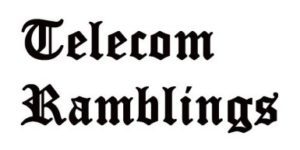Executive summary:
The telecom industry is not in a stable state. In fact, due to the increasingly large strategic and technical option space, we expect operators to become more diverse. Within the next five years, the structure of operators will likely have changed significantly. This makes evaluating them, and making strategic investment choices, much more difficult.
In this report, we highlight the most relevant driving forces and opportunities in the telecom industry. Below, we state a synopsis of our hypothesis of trends the coming years :
1) Europe: volume-driven growth in the core segments of the European telecom space.
Over the projected horizon, we forecast that telcos will win the ‘price x volume’ battle. In three out of five segments, telecom operators should be able to realize growth, which will nevertheless
amount to only about a 1% CAGR over the next five years. And while opex cost-cutting initiatives
cannot continue endlessly, demand for network capacity spanning various infrastructure does,
indeed, seem to be without limits. Thus, new opportunities in the near-core are surfacing.
2) B2B2x is gaining importance.
A new segment – B2B2x – is developing to support the business opportunity of operating customers’ digital solutions. B2B2x differs from the traditional B2C, B2B and wholesale segments in that services become part of the client’s value chain. It differs from the Internet of Things (IoT) in that it does not include B2C, but it does include services delivered by humans. We expect this segment to reach USD 276bn in size – or 8% of global ICT spending – by 2020, and as such, it should be one of the fastest-growth fields for telcos to focus on. This segment is not necessarily new – it was originally created by IT companies. What is new is that telecom operators, leveraging their assets, can carve out a space in it and address a much larger share of the mega-trend ‘digitization of the industry’ than they have historically. Doing this requires a thorough understanding of what is needed to help companies digitize. We expect that some operators will actively address this new segment in an attempt to become part of their customers’ value chains while others may choose not to participate.
3) New production models begin to emerge. Three factors are driving new production models:
- an improved customer experience,
- lower production costs, and
- more innovation/faster time to market.
Eventually network resources will become elastic, transparent and accessible – moving far away from today’s often slow, cumbersome and inefficient architectures. We will see web-like collaboration between companies emerge – even in the network and Operations Support System / Business Support System (OSS/BSS) domain. And, we will also see web-like competition emerge. Cross-border service competition will arise and international expansion will be accelerated.
We expect groups with multinational footprints to be able to leverage group-wide scale effects and eventually achieve lower costs. Beyond this, we expect them to become suppliers to off-footprint operators.
4) Operators will review how they manage their diverse portfolios of assets.
Diverse asset groupings, such as data centers, towers and legacy networks, among others, require differing managerial approaches and strategic objectives. Operators will need to consider establishing dedicated approaches that suit each asset class. Certain assets, such as fiber and small cells, will likely work in asset-sharing models. As many copper-network owners embark on fiber-upgrade journeys, they will need to figure out how to balance the need for fiber sharing with their legacy roadmaps. This is in stark contrast to cable network operators, which, given their technical nature, can follow an ‘upgrade with demand’ strategy. Clearly, this will have a significant impact on balance sheets: a shift from depreciation to opex makes EBITDA levels less comparable.
However, the most dramatic impact will stem from the vastly different types of operators that spring into existence: we will have traditional players competing with asset-light players following a rigorous cost-cutting approach while operating on a simple, customer-centric model. Beyond that, we will see international operators expanding their footprints on the basis of equally available infrastructure assets.
5) Finally, bringing all of the above implications together, we expect the markets to recognize that these vastly different types of operators offer very different risk profiles and very different abilities to scale.
Operators can differentiate their plays by: becoming truly global players; partnering-capable players fully embracing the new segments and customer needs; remaining strong and highly efficient in their domestic markets; becoming asset-heavy or light operators; or pure asset-holding and operating players. All of these possible paths have one thing in common: they anticipate the arrival of the next wave of efficiency increases – this time on a much more global scale.
This drives our final conclusion: We expect to see an increase in the importance of non-tangible assets in the sense of capabilities: e.g., the ‘degree of openness’ of an operator to third parties, the ‘market-oriented approach to assets’, and the ability to ‘take design responsibility for the software that runs their factories’ will gain weight when assessing operators.
More news about telecoms:


